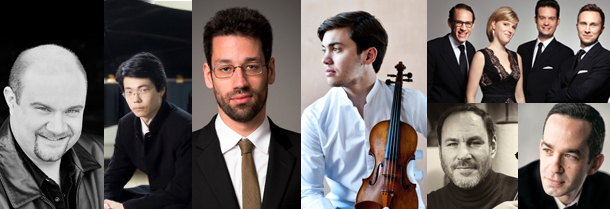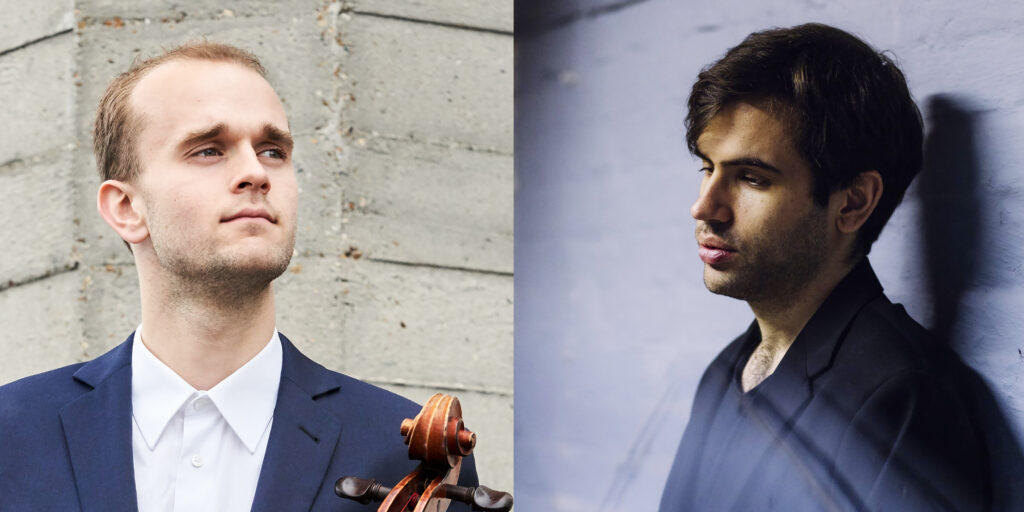Sonata in A major D959
Schubert’s penultimate piano sonata was one of three written in the summer of 1828, just months before his death. This is a pianistically challenging work of unusually wide emotional range. Its moods run the gamut from the heroic to the playful, featuring outbursts of musical vehemence that alternate with moments of poetic reflection. This span of emotional states is at its widest in the slow movement which constitutes the dramatic centrepiece of the sonata.
The Allegro opens with an assertive theme featuring a climbing bass pattern beneath an immovable treble, musically emblematic of firm resolve and inner strength of character. No sooner has this theme been stated than Schubert begins to vary it, giving in to a penchant for immediate development that will dominate the exposition of this movement. His second theme is a simple, soothing melody that also finds itself wandering into developmental territory, thanks to a chromatically rising bass line figure with fugal aspirations that keeps interrupting the proceedings. The real development section, by contrast, is a chiming music box of steadily pulsing harmony chords shadowing the lyrical second theme as it wanders through an enchanted forest of harmonic modulations. The recapitulation is unremarkable except for its thoughtful coda and the poetic washes of harmonic colour with which it ends.
The Andantino second movement begins as a sad little barcarolle rocking mournfully on the waters of its own interior reflections. Its shockingly spare texture and fretful obsession with the same few notes gives a hypnotic quality to its melodic self-absorption. After some 70 bars of harmonic stasis in the key of F-sharp minor it drifts into a fantasy world, as rhythmically free and melodically wide-ranging as the opening section was monotonously repetitive and claustrophobically contained in scope. Musical violence, of a sort unprecedented in Schubert’s previous piano works, then rages forth to create the image of a terrifying hallucination, or a bad drug trip. Calm returns when the sad opening tune reappears, shadowed now with a pathetic echo in the treble above.
The following scherzo, Allegro vivace, is an acrobatic tour de force of register hops that mixes the dancelike character and graceful charm of a Chopin waltz with a mischievous sense of fun most evident in the cascading runs that unexpectedly interrupt the proceedings at regular intervals. The trio, however, is, on its best behaviour, the soul of harmonic stability. But perhaps this civility is only tongue-in-cheek, its gentle hand-crossings a witty parody of the register hops of the main section of the scherzo.
The opening theme of the fourth movement sonata rondo sounds like a solemn processional hymn from a previous age, and indeed in harmonic layout and dignity of tone it echoes the well-known St. Anthony Chorale attributed to Haydn. In this context, its subsequent elaboration in florid counterpoint, with the melody in the tenor, comes as no surprise. The second theme, however, is a songful pianistic creation that delights in the rhythmic bounce of its repeated notes. Schubert’s inventiveness in creating ear-tickling piano textures is extraordinary in this movement. Extraordinary as well is the dramatic series of chords that echo the harmonies of the first movement’s opening bars.
Schwanengesang D957
Schwanengesang (Swan Song) is not a song cycle, as it lacks a narrative thread, but rather a song collection, composed by Schubert just before his death in 1828 and put on sale under this name the following year by his publisher, Thomas Haslinger, who thought it would sell well if marketed as Schubert’s “last farewell to song.”
The collection comprises 14 songs by three contemporary German poets. The first seven songs are to poems by Ludwig Rellstab (1799-1860), the multitalented littérateur and arch-conservative music critic famous for giving Beethoven’s Op. 27 No. 2 sonata its title “Moonlight”. The following six are settings of poems by Heinrich Heine (1797-1856), a cosmopolitan poet of humour and irony who combined a light touch with an aphoristic density of thought. The final, encore song sets the words of the Austrian imperial bureaucrat Johann Gabriel Seidl (1804-1875).
Themes of lost love and communion with nature dominate the Rellstab songs. Liebesbotschaft (Message of love) is typical, with the piano playing the role of rippling brook to the singer’s bright-eyed swain-in-love. Kriegers Ahnung (Warrior’s foreboding) is much less upbeat. Its piano accompaniment follows the beating of the soldier-lover’s racing heartbeat, but the opening and closing passages that frame the story, so evocative of the halting steps of a funeral march, give an undertone of worrying fatefulness to the singer’s words.
Frühlingssehnsucht (Spring longing) paints the breathless enthusiasm of the love-besotted singer who pauses, almost comically, at the end of each verse to ask himself a question. Ständchen (Serenade) is one of Schubert’s best-known melodies, evocative of the stillness of the night and the lover’s heightened awareness of the sounds of nature that surround him. The throbbing piano pulses of Aufenthalt (Resting place) paint the natural world as less distant, more a participant in the lover’s sufferings.
Even more desolate is the mood of In der Ferne (In the distance), with its theme of exile conveyed through a sparseness of texture and the obsessive repetition of melodic phrases. The Rellstab set concludes with Abschied (Farewell), an upbeat evocation of trotting away from town on horseback, the prancing hoof-steps of the lover’s mount picturesquely painted in the staccato articulations of the piano accompaniment.
The poems of Heinrich Heine, many of them concerned with the theme of alienation, are much more compact, and pack a bigger poetic punch. Der Atlas (Atlas) receives the heavy treatment its theme deserves. The lament of the god-man who carries the weight of the world on his shoulders is admirably conveyed by the pervasive use of dotted rhythms and by setting the piano accompaniment in the low range of the keyboard. Much more spare in texture is Ihr Bild (Her picture), in which the concentrated gaze of the lover upon his beloved’s portrait is evoked in unison passages between voice and piano.
Schubert`s little sea-shanty setting of Das Fischermädchen captures well the irony of the role-reversal inherent in the scene, in which it is the “sensitive New Age guy” who sits dreamily on the shore, trying to entice the strong, capable girl out earning a living on the waves to come be with him. A much more seriously poetic watery scene is summoned up in Die Stadt (The town), with its shimmering depiction of the morning sun glinting off the waves, a counterpoint to the dark distant outlines of the town where the singer’s pain originated.
The mood turns spooky in Am Meer (By the sea), a description of the debilitating effects of love, with tears as the deadly poison that rots away the lover from the inside. Despite the hymn-like reverence of the peaceful seaside scene where the tale begins, much deeper currents of emotion emerge, urged into the open by melodramatic tremolos in the piano that tell a different story. Scariest of all is Der Doppelganger (The ghostly double), a night scene in which a man stands before the house where his love once lived and recognizes a spectral shape equally absorbed in sad remembrance: an image of himself. The impassive, slow-moving chords in the piano give no comfort at all to the lonely voice of the singer as he realizes he is descending into madness. This is a song without a melody, symbolic of a situation without hope.
This song collection ends on a note of optimism, however, with Die Taubenpost (The carrier pigeon), a song with a gentle Viennese lilt that merrily praises the contributions of aviary postal delivery to the cause of true love.
Donald G. Gíslason






